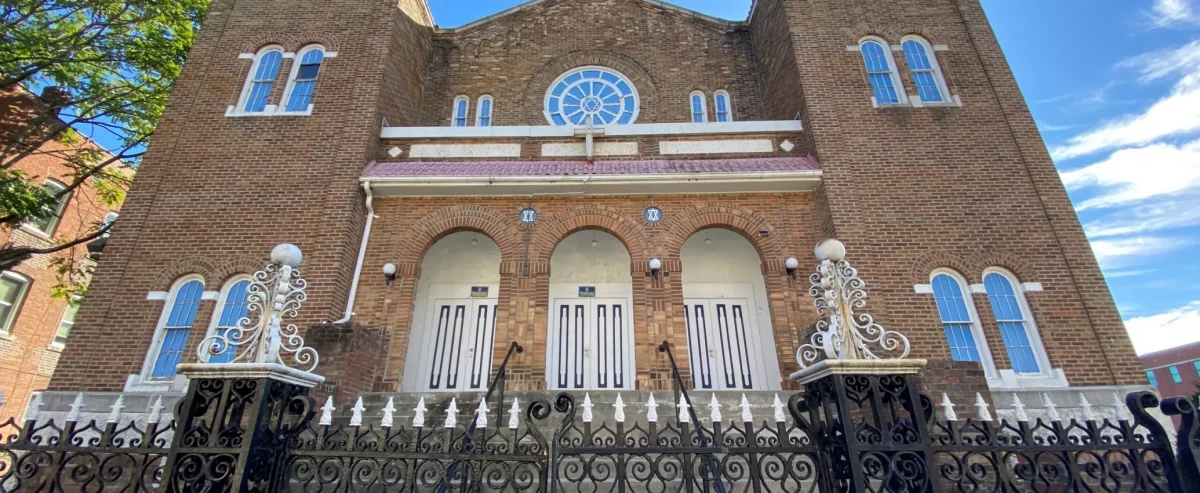I have retired this blog in favor of a newsletter, to which I invite you to subscribe. (It’s free!) The blog will remain online for anyone who finds the old posts useful, but there will be no new ones. Thank you so much for accompanying me this far,
Nov. 17: ‘Building Jewish Hartford’
The Jewish Historical Society of Greater Hartford will host an illustrated lecture on local landmarks of Jewish history on Thursday evening, November 17, at the Mandell Jewish Community Center, 333 Bloomfield Avenue, West Hartford.
The talk, entitled “Building Jewish Hartford,” will be presented by award-winning author and architectural historian Mary M. Donohue. Register here. Tickets cost $10 for Historical Society members, $15 for non-members.
From the Society.
Beginning in the 1870s, members of Hartford’s Jewish community became players in the city’s white-hot real estate market. Jewish real estate brokers, architects, builders, and their clients all contributed to the rapid growth of Hartford and West Hartford. Jewish owners built landmark buildings like G. Fox & Co., Temple Beth Israel, and the Lyric Theater as well as small apartment buildings and residences. Jewish architectural firms such as Berenson & Moses designed dozens of ‘triple-deckers,’ ‘perfect six’ apartment houses, stores, and much more.
Listen to the 2022 Stowe Prize winner
Ahead of his planned talk at the Harriet Beecher Stowe Center on Thursday evening, Clint Smith gave a tremendous interview to Khalilah Brown-Dean on her Connecticut Public show, “Disrupted.” (47 minutes.)
Smith won the 2022 Stowe Prize for his book, “How the Word Is Passed: A Reckoning with the History of Slavery Across America.” From the author’s website: “Beginning in his hometown of New Orleans, Clint Smith leads the reader on an unforgettable tour of monuments and landmarks—those that are honest about the past and those that are not—that offer an inter-generational story of how slavery has been central in shaping our nation’s collective history, and ourselves.”
About that John Mason statue…

CT News Junkie columnist Susan Bigelow did a great job recently in summarizing the Pequot War of 1636-1638–the conflict in which Windsor’s Captain John Mason led Hartford-area settlers in an attack on a Pequot fort in Mystic. Bigelow provided the history as background for her take on plans to remove a statute of Mason at the state Capitol. As she correctly observed:
“Depending on who you ask, John Mason was either a hero who saved the nascent Puritan colony of Connecticut from destruction at the hands of the Pequots or a murderer who committed a horrific atrocity against Indigenous people by burning Mistick Fort with civilian men, women and children still inside. So which was it?
“Believe it or not, it’s both.”
To arguments that removing the statue amounts to projecting today’s values into the past, Bigelow replied that we should instead look at the values of those who erected the statue. “Both statues of Mason, the one at the Capitol and another originally at Mystic that now stands on Palisado Green in Windsor, were products of the late 19th and early 20th centuries and the paternalistic and superior view of white people toward the natives they had supplanted,” she wrote, adding:
… the people of that time projected their own values, and their own vision of Connecticut, back into the past. That vision of Mason as nothing but a hero who conquered the ‘savages’ is as fundamentally flawed as other heroic American narratives so many of us were taught as children.
The state Office of Legislative Management has more on the history of the Capitol here. (PDF)
Perhaps a reward after all for help in solving 1953 murder
There’s good news in a small item today from the Associated Press, via Fox61:
HARTFORD, Conn. — Connecticut legislators are moving closer to making amends with a Hartford woman who helped in the arrest and conviction of a man nearly 70 years ago.
The House of Representatives on Wednesday voted unanimously in favor of issuing a $3,000 reward that had been denied to the woman.
She said she had been sexually assaulted by the man as a teenager in 1953, but police did not take her seriously. It wasn’t until an 11-year-old was raped and killed weeks later that police used her tip to arrest Robert Nelson Malm.
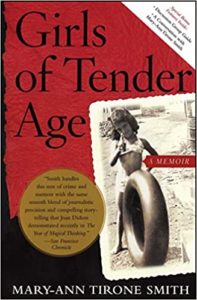
The governor at the time, John Davis Lodge, had issued a reward in the case. But the girl who had gone to the police was denied it, despite taking the matter to the Connecticut Supreme Court.
The murder of the 11-year-old, Irene Fiederowicz, became the center of a gripping 2006 memoir by a classmate and friend of hers, Mary-Ann Tirone-Smith. Called “Girls of Tender Age,” it gives an intimate account of what it was like to grow up in Hartford during the 1950s–and how the city dealt with (or didn’t deal with) the crime. In other words, it’s highly recommended.
Tirone Smith vigorously supports issuing the reward and has been chronicling the legislature’s deliberations on her website. She details the “appalling” rationale that Raymond Baldwin and his fellow Connecticut Supreme Court justices used to deny the claim:
[Baldwin] determined that an offer of a reward was a contract, no different from a business contract. Since the reward—the contract—was dated after [the teenager] had given the police the details of the crime against her, and one day after she picked Malm out of a line-up, Baldwin ruled she did not claim the reward in response to the offer; the offer hadn’t been made yet.
Later, in denying another appeal, Baldwin used the occasion to denigrate the girl and her family for even seeking the reward. According to Tirone-Smith, he berated her “for not appreciating that her consolation should not come from a reward, but from her public duty, which according to him, [was] an obligation.”
Looking back at Hartford parks
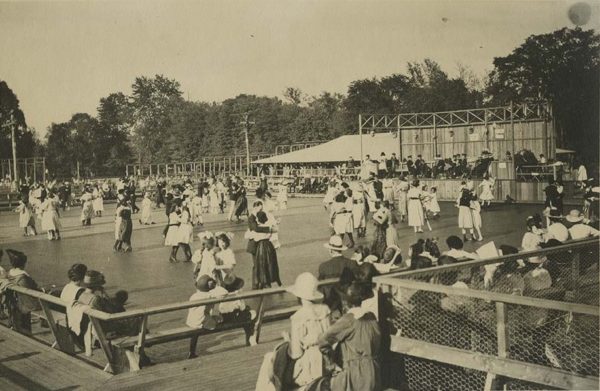
On Monday, the Hartford History Center of the Hartford Public Library will unveil an online exhibit of vintage photographs celebrating the city’s park system.
The exhibit, called “Hartford Springs Into Summer,” will go live at 7 ..m., via an online presentation on Zoom and Facebook Live. Bookmark the exhibit here: https://hartfordparks.omeka.net/exhibits/show/springintosummer/title
The exhibit features newly available material from the HHC’s Parks Collection, according to a Library news release. HHC Historical Research Specialist Maureen Heher will outline how the photographs were selected, which Archivist Jennifer Sharp will discuss the new material.
The Parks Collection sat in storage at City Hall until a city councilor discovered them in the 1980s. It then went to the Hartford History Center. Recently, Sharp began working with the thousands of images and documents, cataloguing them and creating “finding aids.”
“There is another half of the collection that has pretty much never been touched,” she said.
Hartford learns of JFK murder
For the last few years, I’ve made a ritual of listening to this recording of the call-in show that WTIC-AM/FM in Hartford was airing as news of JFK’s murder broke on the afternoon of November 22, 1963. The first news bulletin comes at about the 26-minute mark. But what’s also haunting is the conversation leading up to it: how to make a German chocolate cake, when to trim a maple tree, what the Sigourney-Burk market had for specials that week. So mundane. Then the world changes.
Also on Youtube: Dennis House, then host of the WFSB-TV Sunday morning show “Face the State,” marked the 50th anniversary of the assassination with a look back at how local news organizations covered it:
Matthew Ritter will be the latest speaker from Hartford
With Hartford’s Matthew D. Ritter set to become the next speaker of the Connecticut House of Representatives, this is a good time to list the seven previous speakers from Hartford. They include Ritter’s father, Thomas D. Ritter. All lived in the city at the time of their election.
| Name | Political Party | Term of Service |
| William W. Eaton | Democratic | 1853 |
| Henry C. Deming | Democratic | 1861 |
| Eliphalet A. Bulkeley | Union | 1857 |
| William W. Eaton | Democratic | 1873 |
| Joseph L. Barbour | Republican | 1897 |
| James J. Kennelly | Democratic | 1975-78 |
| Thomas D. Ritter | Democratic | 1993-98 |
| Matthew D. Ritter | Democratic | 2020- |
Eugene Gaddis, Wadsworth Atheneum archivist and author
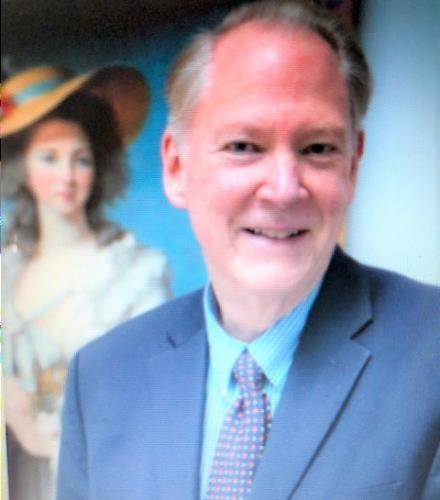
Eugene Gaddis 
Biography of Chick Austin 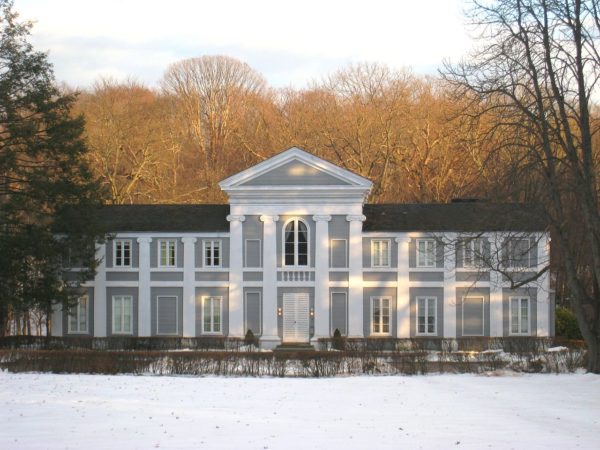
Austin House
Eugene Gaddis, a longtime archivist at the Wadsworth Atheneum and biographer of legendary Atheneum director A. Everett “Chick” Austin Jr., has died at age 72.
Gaddis, who was retired, died at his home in West Hartford on August 18, according to his obituary on Legacy.com.
In 2000, Knopf published Gaddis’ “Magician of the Modern: Chick Austin and the Transformation of the Arts in America.” The book describes how Austin, arriving at the Atheneum in 1927 as its first professional director, pushed and cajoled the conservative museum into showing modern art. Soon, the Atheneum found itself not just participating in the modern art movement–it was in the vanguard of it. Because of Austin’s many connections, the book also serves as a chronicle of Hartford’s arts and social scene in the 1920s, 1930s, and 1940s.
In 1986, when the Austin family gave its Scarborough Street home to the Atheneum, Gaddis became its curator, eventually working to restore it and securing its recognition as a National Historic Landmark.
Gaddis’ tenure with the Atheneum began in 1981, when a week-long survey of museum records led to him creating the archives. He also became a well-known speaker on the Atheneum, and taught classes at at Hartford College for Woman and at the Hartford branch of the University of Connecticut.
A memorial service will be held when it is safe to do so.
Who was the ‘sweet singer of Hartford’?
That’s the latest trivia question. You’ll find the answer here. While you’re the there, check out the previous questions and answers.
Checking on the neighbors
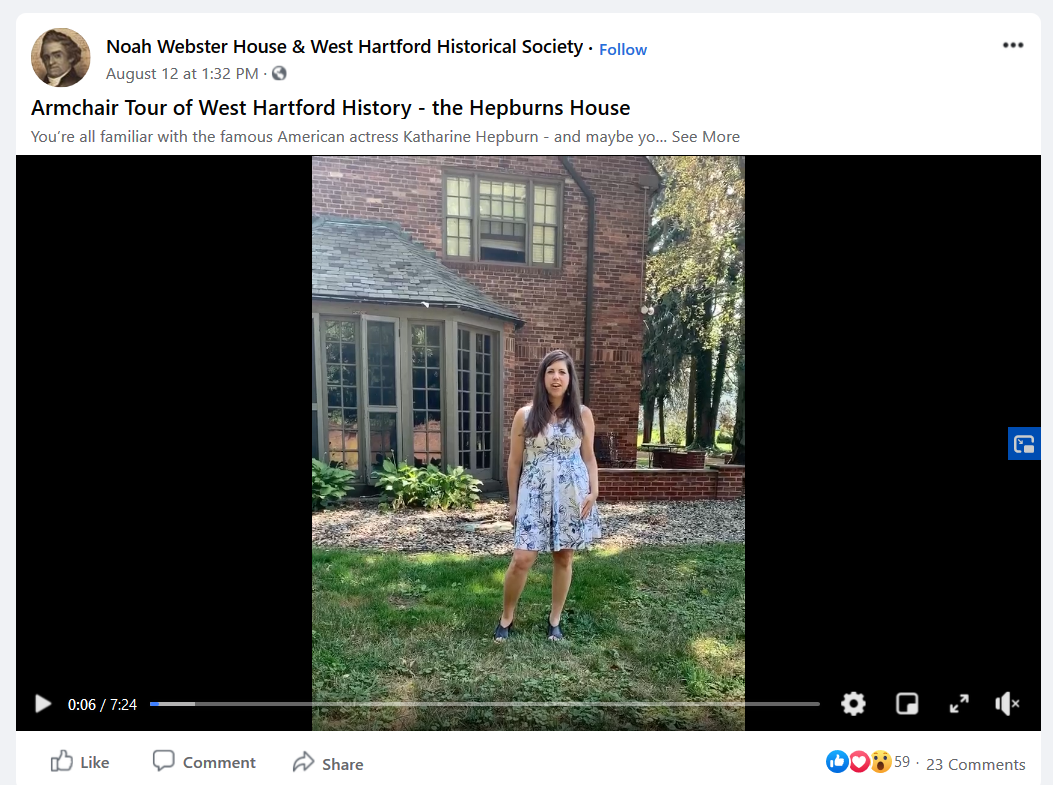
Kudos to the Noah Webster House & West Hartford Historical Society for its “Armchair Tour of West Hartford History,” a series of video tours created in response to the COVID-19 pandemic. While the tours focus on West Hartford history, many touch on Hartford’s as well. For instance, there’s a visit to the American School for the Deaf–which began on Main Street in Hartford and moved to its present campus on South Main Street in West Hartford in 1921. Of course, there’s also one on Elizabeth Park, which straddles the Hartford-West Hartford line. Jennifer Matos, executive director of the museum, hosts each episode. You’ll find them on the museum’s Facebook page and website.
From the Charter Oak to the last of the red-hot mamas
If you haven’t subscribed to Grating the Nutmeg, a podcast dedicated to Connecticut history, you’ve been missing some great Hartford-related episodes.

In the August 19th episode, State Historian Walt Woodward delved into the legend of the Charter Oak. He offered “a new, true, and sometimes amusing look into the history behind this foundational legend.” Mary M. Donohue, assistant publisher of Connecticut Explored, followed on August 30 with the story of Sophie Tucker, the internationally famous entertainer who grew up in Hartford’s East End.
Speaking of entertainment, be sure to listen to the Charter Oak episode all the way to the end. That’s where Woodward channels Hartford poet Lydia Sigourney by giving a dramatic recitation of the elegy she wrote when the tree fell in 1856. It’s, um, unforgettable.
These were the 100th and 101st episodes of the podcast, a project of Woodward’s office and Connecticut Explored, a quarterly magazine concerning state history. Fortunately, you can catch up on all of the episodes in this archive. (And here are some of the Hartford-related ones.)

